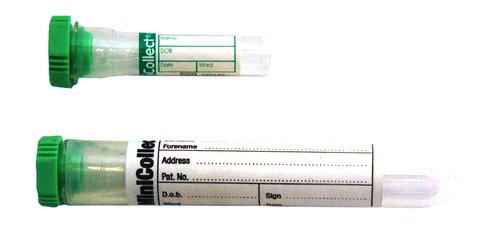Carboxyhaemoglobin (Carbon Monoxide; CO)
Chemical Pathology
Notes
Carboxyhaemoglobin levels (COHb) are indicated when there is a clinical suspicion of carbon monoxide poisoning, however the signs, symptoms and prognosis of acute CO poisoning may correlate poorly with the measured COHb level:
- COHb levels are affected by removal of the subject from the source of CO, natural breathing and any oxygen treatment (the elimination half-life for CO is 320 minutes breathing air, reduced to 80 minutes with 100% oxygen)
- Patients with co-morbidities, the elderly, and the very young or pregnant women can be more sensitive to the hypoxia associated with CO poisoning and can present with symptoms of poisoning at COHb levels that would otherwise be considered normal.
- The classical signs of CO poisoning of cherry-red lips, peripheral cyanosis and retinal haemorrhages are rarely seen.
If carbon monoxide poisoning is suspected healthcare professionals should access TOXBASE for up to date advice on diagnosis and management of the patient.
Sample requirements
Samples should be drawn as near as possible to the time of suspected exposure (as normal breathing rapidly reduces the COHb level), and before oxygen administration.
Carboxyhaemoglobin analysis is normally carried out on the blood gas analysers in the ED and Critical Care departments and SCBU in GRH, and in the Department of Critical Care in CGH and this requires a heparinised syringe sample.
There are no blood gas analysers available in the laboratory.
For adults, blood taken into a 6mL lithium heparin tube

For children, blood taken into a 2mL lithium heparin tube

For neonates, blood taken into a 0.8mL minicollect lithium heparin tube

Storage/transport
Do not store but assay immediately using the nearest blood gas analyser. For GP requests the surgery POCT carbon monoxide breath monitor can be used as a screen.
Required information
Relevant clinical details including time since exposure to venepuncture, co-existing medical conditions, current or recent symptoms and any treatment given.
Turnaround times
N/A
Reference ranges
The correlation between carboxyhaemoglobin concentration and clinical outcome is weak.
Non-smokers : COHb 1–2 %.
Smokers : COHb 5–10%
- The factors listed in the introduction should be considered when interpreting a level of <10%
- COHb ≥10% or the presence of clinical signs/symptoms after known exposure to CO are considered by most to be indicative of CO poisoning
- Levels in smokers are usually <10% but heavy smokers may tolerate levels up to 15%. In these individuals it is difficult to exclude the possibility of CO toxicity.
- Levels of 20-25% with symptoms are usually associated with severe cerebral or cardiac ischaemia.
Further information
- To learn more access the HPA information sheet on carbon monoxide
- Healthcare professionals should always access TOXBASE for up to date information.
- Dept. of Health: Carbon Monoxide Poisoning: Recognise the symptoms and tackle the cause.
Page last updated 11/02/2015